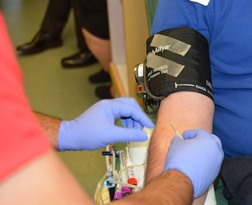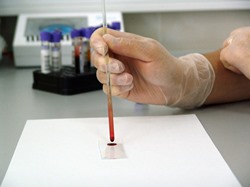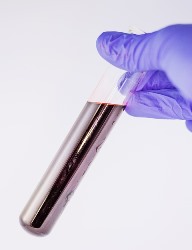Picking a Phlebotomy Course near Plain City Ohio
 Choosing the right phlebotomy school near Plain City OH is an essential initial step toward a rewarding profession as a phlebotomist. It may seem like a challenging task to analyze and compare each of the training alternatives that are available to you. However it’s important that you perform your due diligence to make certain that you get a superior education. In reality, most students start the process by looking at 2 of the qualifiers that first come to mind, which are cost and location. Yet another factor you may look into is whether to attend online classes or commute to a nearby campus. We’ll talk more about online classes later in this article. What you need to keep in mind is that there is a lot more to comparing phlebotomy training programs than locating the closest or the cheapest one. Other variables such as reputation and accreditation are also significant considerations and need to be part of your selection process also. Toward that end, we will provide a list of questions that you need to ask each of the phlebotomy schools you are assessing to help you select the best one for you. But prior to doing that, let’s cover what a phlebotomist is and does, and afterwards resume our conversation about online training.
Choosing the right phlebotomy school near Plain City OH is an essential initial step toward a rewarding profession as a phlebotomist. It may seem like a challenging task to analyze and compare each of the training alternatives that are available to you. However it’s important that you perform your due diligence to make certain that you get a superior education. In reality, most students start the process by looking at 2 of the qualifiers that first come to mind, which are cost and location. Yet another factor you may look into is whether to attend online classes or commute to a nearby campus. We’ll talk more about online classes later in this article. What you need to keep in mind is that there is a lot more to comparing phlebotomy training programs than locating the closest or the cheapest one. Other variables such as reputation and accreditation are also significant considerations and need to be part of your selection process also. Toward that end, we will provide a list of questions that you need to ask each of the phlebotomy schools you are assessing to help you select the best one for you. But prior to doing that, let’s cover what a phlebotomist is and does, and afterwards resume our conversation about online training.
[campusexplorer header_text=”Find Phlebotomy Schools Near You!” aos=”75346615″ concentration=”E7147EE5″ tracking=”PHL-CT”]
Phlebotomy Tech Job Summary
 A phlebotomist, or phlebotomy technician, draws blood from patients. Although that is their principal task, there is in fact so much more to their job description. Prior to drawing a blood sample, a phlebotomist must verify that the tools being used are single use only and sterile. After collection, the sample must be properly labeled with the patient’s information. Afterward, paperwork must be correctly filled out in order to track the sample from the time of collection through the lab testing procedure. The phlebotomist then delivers the blood to either an in-house lab or to an outside lab facility where it can be tested for such things as pregnancy, infectious diseases or blood type. Many Plain City OH phlebotomists in fact work in labs and are in charge of making sure that samples are tested correctly utilizing the strictest quality control procedures. And if those weren’t sufficient duties, they might be required to instruct other phlebotomists in the collection, transport and follow-up process.
A phlebotomist, or phlebotomy technician, draws blood from patients. Although that is their principal task, there is in fact so much more to their job description. Prior to drawing a blood sample, a phlebotomist must verify that the tools being used are single use only and sterile. After collection, the sample must be properly labeled with the patient’s information. Afterward, paperwork must be correctly filled out in order to track the sample from the time of collection through the lab testing procedure. The phlebotomist then delivers the blood to either an in-house lab or to an outside lab facility where it can be tested for such things as pregnancy, infectious diseases or blood type. Many Plain City OH phlebotomists in fact work in labs and are in charge of making sure that samples are tested correctly utilizing the strictest quality control procedures. And if those weren’t sufficient duties, they might be required to instruct other phlebotomists in the collection, transport and follow-up process.
Where are Phlebotomy Techs Employed?
The most basic answer is wherever there are patients. Their work environments are numerous and varied, including Plain City OH hospitals, medical clinics, nursing homes, or blood banks. They may be tasked to draw blood samples from patients of of every age, from infants or toddlers to seniors. Some phlebotomy techs, based on their training and their practice, specialize in drawing samples from a particular type of patient. For example, those practicing in an assisted living facility or nursing home would only be collecting blood from senior patients. If they are working in a maternity ward, they would be collecting blood from newborns and mothers solely. In contrast, phlebotomists practicing in a general hospital setting would be collecting samples from a wide variety of patients and would work with new patients each day.
Phlebotomy Education, Certification and Licensing
 There are basically two types of programs that offer phlebotomist training in Plain City OH, which are certificate and degree programs. The certificate program typically takes less than a year to complete and furnishes a basic education along with the training on how to draw blood. It provides the fastest route to becoming a phlebotomist. An Associate of Science Degree in Clinical Laboratory Science, even though it’s not specifically a phlebotomist degree, will provide training on becoming a phlebotomist. Available at junior and community colleges, they usually require two years to finish. Bachelor’s Degrees are not as available and as a four year program provide a more comprehensive foundation in lab sciences. When you have finished your training, you will no doubt want to get certified. Although not required in the majority of states, many employers look for certification prior to hiring technicians. A few of the principal certifying agencies include:
There are basically two types of programs that offer phlebotomist training in Plain City OH, which are certificate and degree programs. The certificate program typically takes less than a year to complete and furnishes a basic education along with the training on how to draw blood. It provides the fastest route to becoming a phlebotomist. An Associate of Science Degree in Clinical Laboratory Science, even though it’s not specifically a phlebotomist degree, will provide training on becoming a phlebotomist. Available at junior and community colleges, they usually require two years to finish. Bachelor’s Degrees are not as available and as a four year program provide a more comprehensive foundation in lab sciences. When you have finished your training, you will no doubt want to get certified. Although not required in the majority of states, many employers look for certification prior to hiring technicians. A few of the principal certifying agencies include:
- National Phlebotomy Association
- National Healthcareer Association (NHA)
- American Society for Clinical Pathology (ASCP)
- American Medical Technologists (AMT)
There are some states that do call for certification prior to practicing as a phlebotomist, including Nevada and California. California and a handful of additional states even require licensing. So it’s important that you enroll in a phlebotomist training program that not only provides a superior education, but also preps you for any licensing or certification examinations that you are required or elect to take.
Phlebotomy Online Schools
 To start with, let’s dispel one potential mistaken belief. You can’t receive all of your phlebotomy training online. A substantial portion of the curriculum will be practical training and it will be conducted either in an approved Plain City OH healthcare facility or an on-campus lab|an on-campus lab or an approved healthcare facility}. Numerous courses also require completion of an internship in order to graduate. However since the non-clinical portion of the training may be attended online, it may be a more convenient option for many students. As an added benefit, some online colleges are less expensive than their on-campus competitors. And some expenses, for instance those for textbooks or commuting, may be lowered as well. Just make certain that the online phlebotomy program you choose is accredited by a regional or national accrediting organization (more on accreditation to follow). With both the extensive clinical and online training, you can receive a premium education with this means of learning. If you are disciplined enough to learn at home, then obtaining your degree or certificate online might be the best choice for you.
To start with, let’s dispel one potential mistaken belief. You can’t receive all of your phlebotomy training online. A substantial portion of the curriculum will be practical training and it will be conducted either in an approved Plain City OH healthcare facility or an on-campus lab|an on-campus lab or an approved healthcare facility}. Numerous courses also require completion of an internship in order to graduate. However since the non-clinical portion of the training may be attended online, it may be a more convenient option for many students. As an added benefit, some online colleges are less expensive than their on-campus competitors. And some expenses, for instance those for textbooks or commuting, may be lowered as well. Just make certain that the online phlebotomy program you choose is accredited by a regional or national accrediting organization (more on accreditation to follow). With both the extensive clinical and online training, you can receive a premium education with this means of learning. If you are disciplined enough to learn at home, then obtaining your degree or certificate online might be the best choice for you.
Subjects to Ask Phlebotomy Programs
Since you now have a general understanding about what is involved in becoming a phlebotomist, it’s time to initiate your due diligence process. You may have already picked the kind of program you want to enroll in, whether it be for a certificate or a degree. As we previously mentioned, the location of the Ohio campus is relevant in addition to the tuition expense. Maybe you have decided to enroll in an phlebotomy online college. Each of these decisions are a critical part of the procedure for choosing a school or program. But they are not the only considerations when making your decision. Following are several questions that you need to ask about all of the Plain City OH colleges you are looking at before making your ultimate selection.
Is the Phlebotomist Program Specific to Your State? As earlier discussed, each state has its own laws for practicing as a phlebotomy technician. Some states require certification, while a few others mandate licensing. Every state has its own requirement regarding the minimum hours of practical training performed prior to practicing as a phlebotomist. As a result, you might need to pass a State Board, certification or licensing examination. Therefore it’s very important to enroll in a phlebotomy program that satisfies the state specific requirements for Ohio or the state where you will be practicing and readies you for any examinations you may be required to take.
Is the College Accredited? The phlebotomy program and school you select should be accredited by a reputable national or regional accrediting agency, such as the National Accrediting Agency for Clinical Laboratory Sciences (NAACLS). There are a number of benefits to graduating from an accredited program in addition to a guarantee of a superior education. To begin with, if your program is not accredited, you will not qualify to sit for a certification examination offered by any of the earlier listed certifying organizations. Next, accreditation will help in getting loans or financial assistance, which are often not available for non-accredited colleges in Plain City OH. Last, graduating from an accredited college can make you more desirable to prospective employers in the job market.
What is the Program’s Reputation? In numerous states there is minimal or no regulation of phlebotomist schools, so there are those that are not of the highest caliber. So along with accreditation, it’s important to investigate the reputations of all schools you are reviewing. You can start by requesting references from the schools from employers where they place their students as part of their job assistance program. You can screen internet school reviews and rating services and solicit the accrediting organizations for their reviews as well. You can even check with some Plain City OH local clinics or hospitals that you might have an interest in working for and see if they can provide any insights. As a final thought, you can check with the Ohio school licensing authority and ask if any complaints have been submitted or if the schools are in full compliance.
Is Ample Training Included? First, check with the Ohio regulator or the state regulator where you will be working to find out if there are any minimum requirements for the length of training, both classroom and practical. As a minimum, any Plain City OH phlebotomy program that you are considering should furnish no less than 40 hours of classroom training (most require 120) and 120 hours of practical training. Anything lower than these minimums may indicate that the program is not comprehensive enough to provide sufficient training.
Are Internship Programs Sponsored? Find out from the Ohio schools you are reviewing if they have an internship program in collaboration with regional medical facilities. They are the ideal way to get hands-on practical training often not available on campus. As an additional benefit, internships can help students establish contacts within the local Plain City OH medical community. And they look good on resumes also.
Is Job Placement Help Offered? Getting your first phlebotomy position will be much easier with the support of a job placement program. Ask if the schools you are looking at offer assistance and what their job placement rate is. If a school has a high rate, meaning they place the majority of their students in jobs, it’s an indication that the program has both a good reputation as well as an extensive network of professional contacts within the Plain City OH medical community.
Are Classes Available as Needed? And last, it’s critical to make sure that the ultimate school you select offers classes at times that will accommodate your hectic lifestyle. This is particularly important if you opt to continue working while attending college. If you need to attend classes in the evenings or on weekends near Plain City OH, check that they are offered at those times. Additionally, if you can only attend part-time, confirm it is an option as well. And if you have decided to attend online, with the clinical training requirement, make certain those hours can also be fulfilled within your schedule. And ask what the make-up procedure is should you need to miss any classes because of emergencies or illness.
Why Did You Want to Become a Phlebotomist?
When getting ready to interview for a Phlebotomist job, it's important to review questions you could be asked. One of the questions that recruiters typically ask Phlebotomist applicants is "What compelled you to select Phlebotomy as a profession?". What the interviewer is trying to discover is not just the private reasons you may have for being Phlebotomist, but also what qualities and talents you possess that make you good at your profession. You will undoubtedly be asked questions relating specifically to Phlebotomy, in addition to a significant number of standard interview questions, so you must prepare some approaches about how you would like to answer them. Considering there are numerous variables that go into choosing a career, you can address this primary question in a variety of ways. When readying an answer, attempt to include the reasons the work appeals to you in addition to the strengths you have that make you an exceptional Phlebotomy Technician and the perfiect choice for the job. Don't try to memorize a response, but jot down several concepts and anecdotes that pertain to your personal experiences and strengths. Reading through sample answers can assist you to formulate your own concepts, and provide ideas of what to include to wow the recruiter.Find the Ideal Phlebotomy Program near Plain City OH
Making certain that you select the right phlebotomy training is an essential first step toward your success in this gratifying health care field. As we have addressed in this article, there are a number of factors that contribute toward the selection of a superior college. Phlebotomist certificate or degree programs can be available in a variety of academic institutes, including junior or community colleges, vocational schools, and colleges and universities that provide a comprehensive range of programs in healthcare and medical sciences. Program offerings can vary slightly from state to state as each state has its own prerequisites when it comes to phlebotomist training, licensing and certification. The most important point is that you need to diligently screen and compare each school prior to making your final selection. By addressing the questions that we have provided, you will be able to narrow down your options so that you can select the ideal school for you. And with the proper education, you can accomplish your goal of becoming a phlebotomist in Plain City OH.
Learn About Plain City Ohio
Plain City, Ohio
Plain City is a village in Madison and Union counties in the U.S. state of Ohio, along Big Darby Creek. The population was 4,225 at the 2010 census.[6]
Until about 1800, the Ohio Country was inhabited by Mingo and Wyandot Indians, and there was an Indian village just north of present-day Plain City.[7] After 1795, as white settlers began moving into the region, the area around present-day Plain City was referred to as Pleasant Valley.[citation needed] This name remained in use into the 20th century, appearing in the Ohio Guide of the late Depression era.[8]
In 1814, Isaac Bigelow travelled to the area from Centre County, Pennsylvania to pay for land purchased from his uncle,[9] then returned to Pennsylvania to study medicine with his father. He returned in 1817, and settled in the Pleasant Valley area in 1818. He hired a surveyor named David Chapman, and laid out the town of Westminster on June 11, 1818.[9][10] At the time, Westminster lay wholly within Darby Township in Madison County. In 1820, when Union County was formed, the county line was moved to the middle of Westminster. In 1823, the previous survey was resurveyed, additional territory was incorporated, and the town's name was changed from Westminster to Pleasant Valley.[9][10] From 1832 to 1851, there were six additions to the town limits.[10] In 1851, due to there already being another town in Ohio named Pleasant Valley, the town changed its name to Plain City.[10]
Previous to 1850, Plain City was a smaller trading point than Amity, but after a trunk-line for the Atlantic and Great Western Railroad was laid through its corporation limits, business and manufacturing increased dramatically.[10] The corporation limits were extended in 1868.[11] As of 1875, the town contained five churches, one newspaper, one bank, one brick planing mill, one flour mill, four dry goods stores, three drug stores, three grocery stores, one jewelry store, one hotel, one carriage and wagon store, two harness shops, two wagon shops, two blacksmith shops, and a boot and shoe store.[11]
More Interesting Ohio Cities
Business Results 1 - 5 of 22
Plain City OH Blood Labs - BingNews Search results
-
Where to find Associated Clinical Laboratories patient service centers in Erie, Pa.
The newest location is the 13th ACL facility in the Erie area, replacing the lab that closed at 3315 Liberty St. earlier this fall.
-
Pathology & Lab Medicine
Clinicians discuss the rapidly evolving therapies, technology, and surgical approaches for early-stage NSCLC and take a fresh look at the future of care. Teamwork: A Multidisciplinary Approach to ...
-
Residents check out wellness at Westlake Porter Public Library health fair
Kathy A., left, visited with Registered Nurse Christine P. at the health fair presented by Westlake Porter Public Library on Nov. 2. She and many others sought several University Hospitals screenings, ...
-
UD students explore Appalachian Trail through new environmental biology lab
This summer, University of Dayton biologist Chelse Prather took a group of students on a six-day backpacking trip through Virginia’s Blue Ridge Mountains as part of a new environmental biology lab to ...
-
Clandestine drug lab found during probation search in Union City
UNION CITY, Calif. - A clandestine drug lab was discovered after Union City officers were conducting a probation search Friday morning. The day began around 8 a.m. Friday, when Union City Police ...
-
City Imaging & Clinical Labs to expand its services across North India
The company plans to grow its network, offering world-class laboratory services to hospitals with 50 or more beds. The goal is to extend its footprint across North India over the next five years ...
-
Quest Diagnostics completes OhioHealth lab assets purchase
The purchase aims to expand access to cost-effective laboratory services in Ohio. Most of the outreach testing formerly performed by OhioHealth will be provided by Quest's Pittsburgh-based full ...
-
Ohio OK’s more marijuana companies to operate in recreational market – including 4 testing labs
Ohio – Thirty-four Ohio medical marijuana businesses now have certificates of operation to expand into the recreational market, including the first four testing labs to receive permits.
-
Seibersdorf Laboratories
The IAEA maintains eight nuclear applications laboratories in Seibersdorf, Austria. They support and implement activities that respond to the developmental needs of Member States in a range of subject ...
-
Blood sample collection in lizards
Blood sample collection in lizards is an important technique. This column describes techniques for sample collection from the ventral coccygeal vein and the ventral abdominal vein. The ventral ...
-
Lab Members
Undergraduate students in our lab participate in ongoing research projects and pursue their own projects in the form of a departmental honors thesis, or through Miami University awards such as the ...


